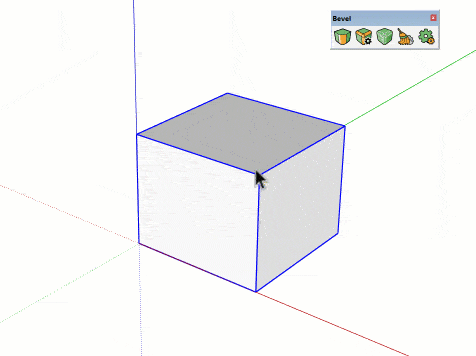Maximizing BIM with IFC Integration in SketchUp for Seamless Models

In the realm of Building Information Modeling (BIM), leveraging Industry Foundation Classes (IFC) within SketchUp is a game-changer. By adopting IFC standards, SketchUp models become interoperable, facilitating seamless collaboration and data continuity across the BIM ecosystem.
Understanding IFC Integration in SketchUp
At the heart of BIM projects in SketchUp lies the integration of IFC information. IFC serves as a standardized, open file format that streamlines the exchange and sharing of BIM data among different software applications. By incorporating IFC into SketchUp models, architects and designers ensure compatibility and enhance collaboration within the broader BIM framework.
Step-by-Step Guide to Implementing IFC in SketchUp
1. Familiarize with IFC Structure: Understanding the IFC schema relevant to your project is crucial. Identify the correct categories and entities (e.g., IfcWall, IfcDoor) to ensure effective communication within the BIM framework.
2. Model Preparation: Organize SketchUp geometry into logical groups or components aligned with IFC entities. Proper organization facilitates accurate IFC classification and export.
3. Assign IFC Entities: Utilize SketchUp’s “Classifier” tool to tag components with IFC classifications directly within the software. This step ensures that your model is BIM-informative and ready for integration into the project workflow.
4. Export IFC Data: Export your classified model as an IFC file using SketchUp’s “Export” function. This IFC file maintains embedded information intact, enabling seamless import into other BIM software applications.
5. Collaboration and Verification: Collaborate with project stakeholders to verify the integrity and accuracy of the IFC data. Tools like BIMcollab or Solibri Model Checker aid in inspecting and validating the IFC file against project requirements and standards.
Best Practices for IFC Implementation in SketchUp
- Consistency is Key: Maintain consistency in classifying components and assigning IFC entities throughout the project to facilitate smoother data exchange and minimize errors.
- Stay Informed: Keep abreast of the latest IFC standards and best practices through resources like buildingSMART International forum.
- Engage with Professionals: Collaborate closely with BIM managers and project stakeholders well-versed in IFC to ensure effective implementation in SketchUp models.
Challenges and Solutions in IFC Integration
While the benefits of leveraging IFC in SketchUp are undeniable, several challenges may arise during implementation. These challenges include:
1. Complex Model Structures: Large-scale projects with intricate geometries may pose challenges in properly organizing and classifying components for IFC integration. Solutions include breaking down the model into manageable sections and establishing clear naming conventions.
2. Software Compatibility: Ensuring compatibility between SketchUp and other BIM software applications during the import and export of IFC files is essential. Regular updates and communication with software developers help address compatibility issues.
3. Data Accuracy and Consistency: Maintaining data accuracy and consistency across different software platforms is crucial for successful collaboration. Regular audits and quality checks can help identify and rectify discrepancies.
4. Stakeholder Collaboration: Effective collaboration among project stakeholders, including architects, engineers, contractors, and clients, is vital for seamless IFC integration. Clear communication channels and regular meetings facilitate alignment on project goals and requirements.
Case Studies: Successful Implementation of IFC in SketchUp
1. Design Collaboration on a High-Rise Residential Project: In this case study, a multidisciplinary team utilized SketchUp and IFC integration to streamline design collaboration on a high-rise residential project. By adopting IFC standards early in the design process, the team achieved seamless data exchange and improved project coordination.
2. Heritage Preservation Project: SketchUp’s versatility, coupled with IFC integration, proved instrumental in a heritage preservation project. By accurately classifying and exporting building components as IFC entities, architects and conservationists maintained data integrity while collaborating on the restoration of historic structures.
Future Trends and Developments in IFC Integration
As technology continues to evolve, the future of IFC integration in SketchUp holds exciting possibilities. Some emerging trends and developments include:
1. Enhanced Collaboration Features: Integration of advanced collaboration features within SketchUp, such as real-time co-authoring and cloud-based data sharing, further streamline collaboration among project stakeholders.
2. Artificial Intelligence and Automation: Leveraging artificial intelligence (AI) and automation technologies to streamline the classification and assignment of IFC entities within SketchUp models, reducing manual efforts and improving accuracy.
3. Augmented Reality (AR) and Virtual Reality (VR) Integration: Integration of AR and VR technologies into SketchUp platforms enhances visualization and project coordination, enabling stakeholders to interact with BIM models in immersive environments.
Conclusion
In conclusion, leveraging IFC for comprehensive BIM integration in SketchUp is paramount for architects, designers, and project stakeholders aiming to streamline collaboration, enhance data continuity, and improve project outcomes. By following best practices, addressing challenges proactively, and staying abreast of emerging trends, practitioners can harness the full potential of IFC integration within SketchUp, ushering in a new era of efficiency and innovation in BIM projects. With a clear understanding of IFC principles and practical implementation strategies, architects and designers can elevate their SketchUp models to new heights, ensuring they remain integral components of the collaborative and information-rich BIM ecosystem.












